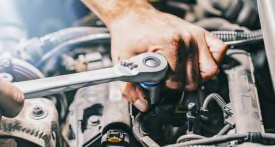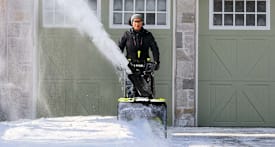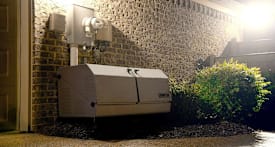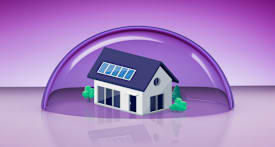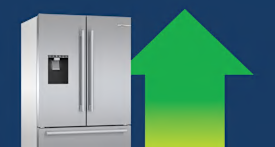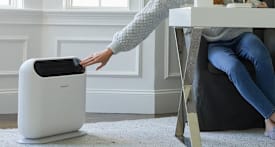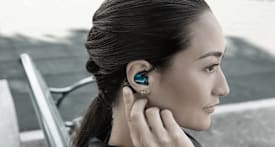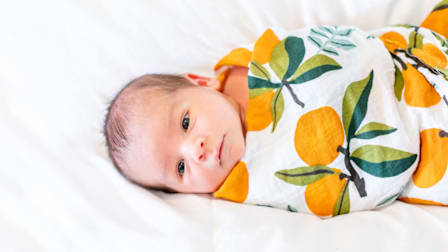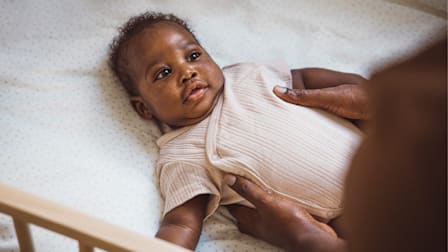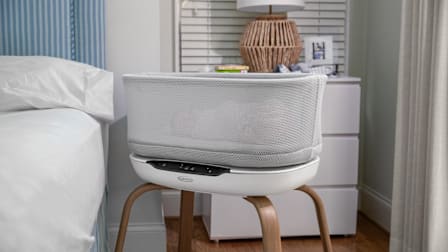SIDS and SUID Prevention: Safe Sleep Guidelines Parents Need to Know
These simple rules can help keep your baby safe

SIDS is the last thing any new parent wants to think about. It’s devastating even to imagine. But understanding safe sleep practices and SIDS prevention is an essential part of those first months at home with a new baby—just like learning how to bathe and change your newborn.
What Is SIDS?
SIDS stands for sudden infant death syndrome, and is considered a type of SUID, which stands for sudden unexpected infant death. SIDS is the term used for an unexpected infant death from an unknown cause, whereas SUID is an overarching term that includes both SIDS and other, known causes of infant mortality, such as suffocation from an object in the crib or bed.
How Common Is SIDS?
According to the most recent data from the Centers for Disease Control and Prevention, there were around 3,700 sudden, unexpected infant deaths in 2022. Of those deaths, 1,529 were from SIDS, 1,131 were from unknown causes, and 1,040 resulted from accidental suffocation or strangulation while in bed. A 2024 study found that at least 76 percent of SUID cases across 23 U.S. jurisdictions involved multiple unsafe sleep practices. This is why it’s so important for parents and caregivers to understand safe sleep guidelines, and use them for every sleep, every time.
SIDS Prevention
Jessica Madden, MD, board-certified pediatrician, neonatologist, and an international board-certified lactation consultant (IBCLC), says, “The best way to prevent SIDS is to follow safe sleep practices every single time your baby is put to sleep. These include making sure that your baby sleeps alone, on their back, on a flat surface intended for infant sleep—a crib, bassinet, or play yard—without any pillows, blankets, stuffed animals, or crib bumpers.”
Here’s what parents and caregivers need to know about preventing SIDS, the third-leading cause of death for infants in the U.S.
The ABCs of Safe Sleep
This acronym for safe sleep practices is simple enough to remember even when you’re running on a few hours of sleep with a newborn. The American Academy of Pediatrics began the ABC campaign for safe sleep in 1992, and it’s working—SIDS declined from around 130 cases per 100,000 live births in 1990 to around 38 in 2020. However, progress has stagnated from 2000 to the present, prompting physicians and public health experts to continue to advocate for safe sleep.
Co-Sleeping Is Not Recommended, but Room Sharing Is
Currently, the AAP doesn’t recommend co-sleeping at all, but rather sleeping in the same room in separate beds, or “room sharing,” for at least the first six months, with the baby close to your bed.
Co-sleeping increases the risk of SIDS and SUID, notes James M. Greenberg, MD, co-director of the Perinatal Institute at Cincinnati Children’s Hospital and Medical Center, a neonatologist and researcher who works to reduce preterm birth and infant mortality. He shares that many of the cases he sees are related to suffocation by someone rolling over onto a co-sleeping baby. He adds that a significant percentage of co-sleeping deaths he has observed in recent years in his own patient population didn’t involve a parent but rather a caregiver, sibling, or other relative or friend caring for the baby.
It’s worth noting that not everyone shares the AAP’s view on co-sleeping. James McKenna, PhD, an anthropology professor at the University of Notre Dame, and director emeritus of the Mother-Baby Behavioral Sleep Laboratory, points on his website to the “bed sharing controversy” that separates official medical guidelines from the practices of cosleeping that some families choose to include in their caregiving, especially if they are breastfeeding.
Though the AAP recommends breastfeeding until at least 12 months to further reduce the risk of SIDS, they recommend moving the baby back to the crib after breastfeeding, and never falling asleep with them on your chest or while holding them.
Baby Products That Increase SIDS and SUID Risk
Swings, bouncers, and co-sleeping baskets that go on top of the parents’ bed are not safe for sleep. In September 2024, the Consumer Product Safety Commission released a new report demonstrating that unsafe sleep environments cause hundreds of injuries and deaths.
The report concludes that, on average, more than 170 infant deaths were associated with nursery products each year between 2019 and 2021. It also shows African American children made up 33 percent of the deaths, more than double their 15 percent share in the population. “Racial disparities and infant mortality are a primary focus” for medical organizations and providers, Greenberg says. Creating better access to prenatal and postnatal care and “improving the healthcare system, so that’s not as racist as it has been before,” will be key to driving down the incidence of SIDS in African American babies.
Parents should do their own research and be wary of products marketed as decreasing SIDS risk. Here are a few categories of baby products that should not be used for sleep:
Don’t Use Inclined Products for Sleep
In 2021, the CPSC approved a major new federal standard for infant sleep products, requiring that baby product companies remove “inclined sleeping products” from the market, when advertised as sleep devices. One of the most widespread recalls related to inclined baby products was the Fisher-Price Rock ’n Play Sleepers, with 4.7 million products recalled in April 2019. Consumer Reports has worked tirelessly to have these products federally banned to prevent further injuries and deaths.
While the idea of a baby sleeping cozily in a swing may sound sweet, that inclined position presents a serious risk. “If infants fall asleep in any of these devices and their head and neck droop, they can cut off their airway (asphyxia),” which can lead to respiratory arrest and death, Madden says.
If your baby falls asleep in any inclined infant product meant for awake time—whether it’s a swing, a bouncer, a bassinet, or even a car seat—gently move them to their crib.
Don’t Prop Your Baby Up on Any Pillow Products
“The same thing can happen if babies are propped up to sleep on nursing donut-shaped pillows or infant positioning wedges,” Madden says. “If your baby falls asleep in an upright position in/on any of these products, they should be moved to a flat and safe sleep surface as soon as possible.”
This includes baby lounger pillows such as the DockATot and the recalled Boppy Newborn Lounger, among others.
Don’t Put Anything Else in the Crib
The beautiful crib bedding set you registered for? You’ll only need the fitted sheet for now. Your favorite auntie’s stuffed dino she gave you when you were pregnant? Sorry, still a no. Though it might seem bare, your baby’s crib is safest for sleep without anything other than a fitted sheet that is tightly and firmly secured around the mattress. Until your child is 12 months of age, they should not sleep with a stuffed animal, blanket, or pillow, either.
Don’t Use Weighted Sleep Sacks
Recently, the AAP warned against weighted sleep sacks, and in August 2024, Sen. Richard Blumenthal and Rep. Tony Cárdenas introduced a bill to ban them, and to categorize them as hazardous under the Consumer Product Safety Act. Earlier in 2024, major retailers such as Amazon and Target stopped carrying weighted products like sleep sacks and stuffies because of these safety concerns. Consumer Reports confirmed that weighted baby sleep products aren’t safe either.
However, parents can use swaddles and until the baby can roll over, as the AAP recommends, then switch to unweighted sleep sacks only, eliminating swaddles. Babies should not have too many layers on or too heavy of a sleep bag that they are sweating or otherwise seem flushed or hot.
'These Aren't Statistics, These Are Babies.'
Cuts to federal funding for safe sleep education, combined with unsafe imagery flooding tired parents’ feeds and screens, are putting America’s babies at risk.
Baby Products That May Reduce SIDS Risk
While parents should be wary of any product meant to help with SIDS, some are actually helpful, according to experts.
Pacifiers
Pacifiers may help reduce the risk of SIDS, though parents shouldn’t attach them to babies with strings or cords, to prevent strangulation. There are two reasons: If the baby is moving their tongue, it’s pushed forward a bit, reducing the risk of it falling back too far in their mouth and suffocating them. Also, babies using pacifiers may sleep a bit more lightly than those who aren’t, and that arousal can help with SIDS prevention.
What About the Snoo Bassinet?
The Snoo Smart Sleeper, created by pediatrician Harvey Karp, MD, was granted FDA De Novo approval in 2023, meaning the Food and Drug Administration recognizes it as a product designed to keep babies safely on their backs. (Read CR’s review of the Snoo, and join or sign in to access our test results.) The FDA has also said, however, that the Snoo has not been proven to prevent or reduce the risk of SIDS: “At this time, there are no infant sleep systems or infant positioners authorized for marketing by the FDA to prevent or reduce the risk of SIDS/SUID."
The Snoo does, however, keep your baby secure on their back in a built-in swaddle. “Swaddling, sound, and motion improve infant sleep. However, the American Academy of Pediatrics recommends stopping swaddling around 2 or 3 months, when the baby can roll over, because sleeping on the stomach while swaddled is unsafe; they recommend only using safe motion (in a totally flat environment), and safe levels of sound,” Karp says.
This type of motion is safe, Karp and Greenberg say, while putting your baby in a car seat to drive around the block for long periods of time until they fall asleep is not.
The Case Against Belly Sleeping
Greenberg says plenty of patients’ relatives, such as grandmothers who remember the days of babies sleeping on their bellies, will suggest flipping a fussing baby onto their belly. However, SUID risk substantially increases on their bellies, because infants can’t move their neck as freely as on their backs, he shares.
“If you’re on your back, you can turn your head basically 180 degrees; on your side, you can turn your head 90 degrees; if you’re prone, you can’t move your head at all,” Greenberg says, adding that babies are good at turning their head to clear their airways if they spit up.
As AAP guidelines note, you should always place your baby to sleep on their back, but after they’ve mastered rolling in both directions (from back to belly and from belly to back) you don’t need to keep turning your baby onto their back again all night long.
A Parent-to-Parent Note About Sleep Safety
When it’s 3 a.m. (again!) and you are on your last ounce of energy trying to help a crying baby sleep, and nothing is working, the last thing you might feel like doing is remembering the dang ABC’s. It can be tempting to fall asleep on the couch with the baby, bring them into your bed, or let them sleep in a swing “just this once.” But please know that the risk just isn’t worth it.
Instead, look to other means of support when you are exhausted. It’s okay to say you need help. Reach out to family, friends, or other caregiving resources such as a doula or your pediatrician. Taking care of your own mental health is one of the most important ways you can care for your baby.
Greenberg also shares the following resources:
- Call “2-1-1”, a helpline for mental health resources, talking through a problem, and other issues, to get connected with assistance. You can just tell them you need help with your baby who won’t sleep, or your own mental health. “It doesn’t need to be a sophisticated [question], okay?” Greenberg adds.
- Reach out to your child’s pediatrician or your own OB-GYN or family care doctor for the next steps. They might recommend bringing in the baby to be evaluated for other medical issues, from painful teething to ear infections, that might be keeping them up at night.
- Dial 988 for the 988 Suicide and Crisis Lifeline to access a trained counselor if your own mental health is at risk.
- Take a break—it is okay to place the baby in a safe crib for a few minutes while you regain composure before trying again.
You’re not alone. And I hope it helps to remember that even the toughest stages of sleep are just that: stages, and they will pass.
Correction: This article has been updated with the correct recall date of Fisher-Price Rock ’n Play Sleepers; they were recalled in April 2019, not January 2023.


